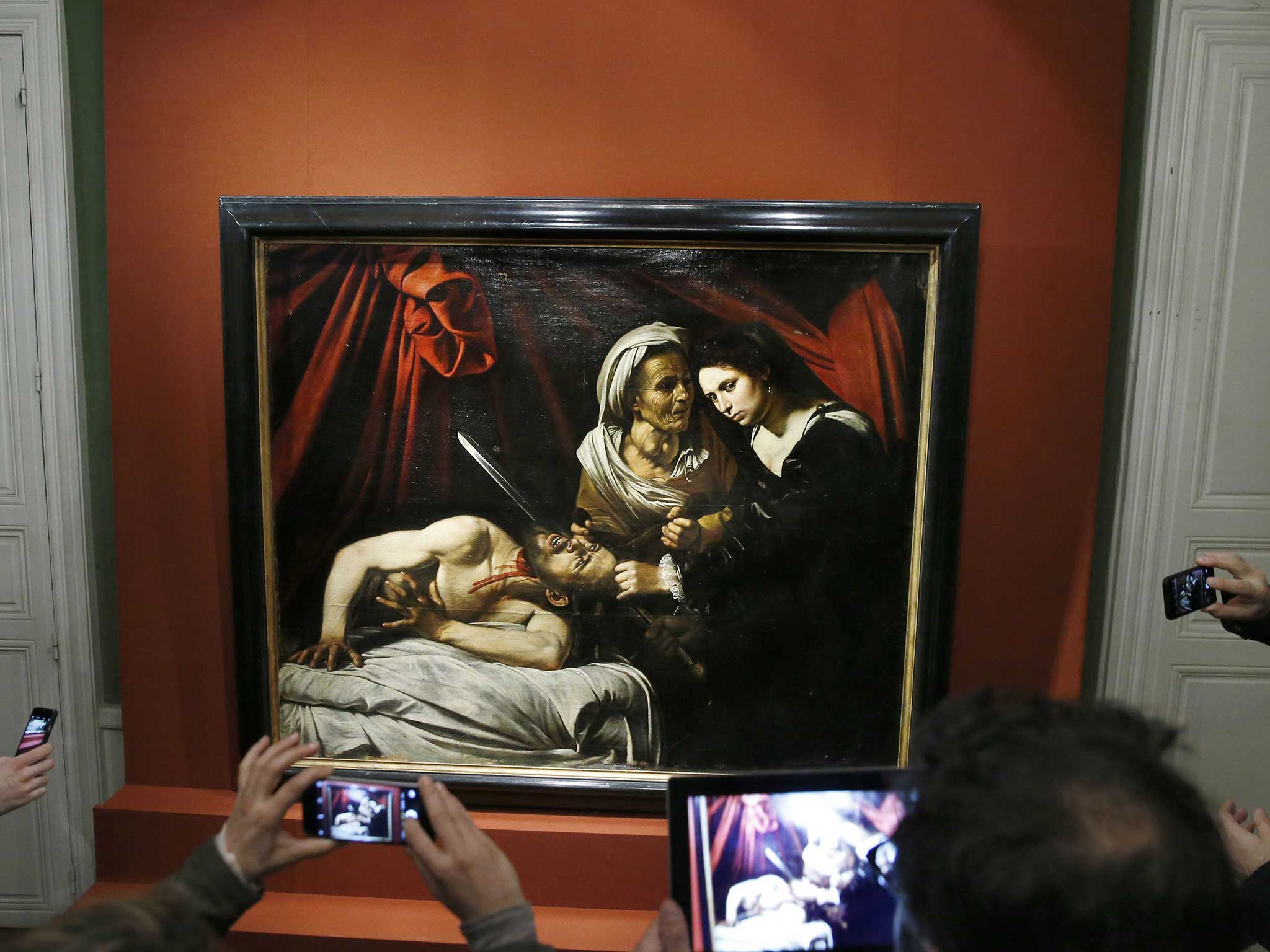Caravaggio masterpiece worth £100m found in a sealed attic in Toulouse
The piece was discovered when homeowners went to fix a leak in the roof

A painting found in a leaky attic in Toulouse has been provisionally identified as a lost masterpiece by late 16th-century Italian painter Caravaggio worth an estimated €120m (£95.7m).
A French art expert said he believed that the bloody biblical scene was Caravaggio’s Judith Beheading Holofernes, painted in the early 17th century and lost a century later.
Eric Turquin admitted, however, that the authenticity of the unsigned painting would be disputed and might never be finally established.
The large painting was discovered two years ago in a sealed attic in the South-western French city when the house owners were searching for the source of a leak in the roof.
“The very characteristic lighting, the energy typical of Caravaggio, executed without corrections by a confident hand … mean that this must be authentic,” Mr Turquin said today.
“Just look at how the artist painted the finger-nails, for instance, with just a little touch of white, never corrected, never revisited ….That is the touch of a master, someone with real authority.”
Mr Turquin’s opinion has received the written support of one of the greatest experts on Caravaggio (1571-1610). Nicolas Spinoza, former director of the Naples art gallery, said: “The canvas should be considered a true original work by the Lombard master, even if we have no tangible and irrefutable proof.”
Caravaggio (real name Michelangelo Merisi) is known to have painted two versions of the murder by decapitation of the Syrian general Holofernes by the Hebrew heroine, Judith. According to the bible, the widow Judith agreed to go to the tent of the general who was besieging her city. She then cut his head off.
One version is displayed at the National Gallery of Ancient Art in Rome. The existence of the other is known from a contemporary copy made by the Flemish painter, Louis Finson.
The original is believed to have vanished in the early 18th century and may have been hidden, for reasons unknown, in the house in Toulouse since the mid-1800s.
The French art expert, Mr Turquin, admitted today that “serious people” believed that the painting may also be a copy by Finson. He said he was personally convinced that it was an original Caravaggio but said that the question might never be resolved.
The French culture minister has banned the painting from being sold abroad for three months while attempts are made to raise funds to buy the painting for the Louvre or another French museum. If the painting is accepted as a Caravaggio, it would be worth around €120m. Even if its provenance is disputed, its value will run to many tens of millions of euros.
Either way, for the unnamed family who found the painting, a leaky roof has proved to be as good as a lottery jackpot.
Join our commenting forum
Join thought-provoking conversations, follow other Independent readers and see their replies
Comments
Bookmark popover
Removed from bookmarks